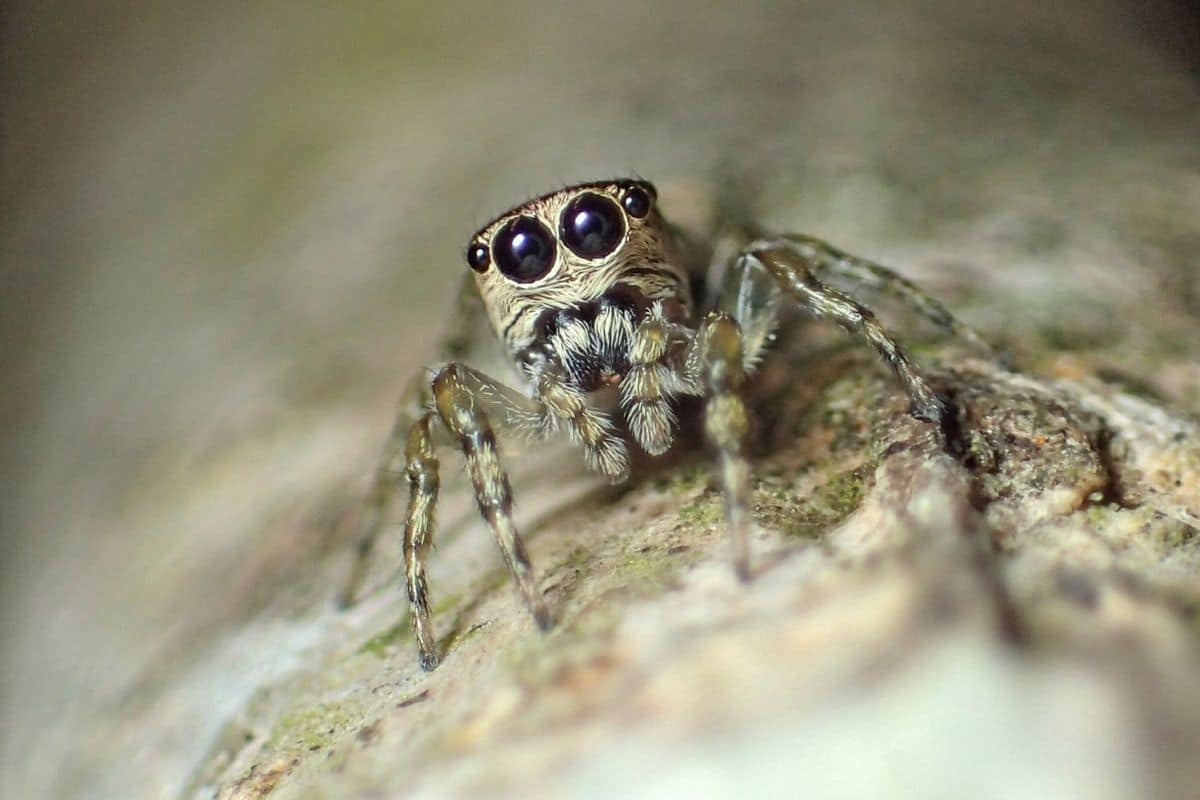
But their work is not over yet: at least 50,000 spider species are expected to be discovered.
A special moment last week: the World Spider Catalog was expanded with a new spider species. It must be admitted: that in itself is not very unique; new spider species are regularly described and added to the catalog. But still, the addition of the recently discovered spider species is worth noting. It concerns the 50,000th officially described spider species and added to the catalog!
jumping spider
This 50,000th spider species was discovered in southern Brazil and also occurs in Uruguay and around Buenos Aires. The spider has the name Guriurius minuano and belongs to the jumping spiders: a family that already counts more than 5400(!) species, spread over more than 570 genera.
Still 50,000 species to go (researchers think)
The discovery of the 50,000th spider species is certainly a milestone. But it is by no means an end point; researchers expect that – when it comes to the discovery of spiders – they are only half way at the moment. Worldwide, there are about 50,000 more spider species waiting to be discovered. “It is only an estimate,” emphasizes Professor Christian Kropf, of the Natural History Museum of Bern (Switzerland) that the World Spider Catalog houses.
Centuries of work
The first spider species was described in 1757. It means it took scientists 265 years to discover and describe the first 50,000 spider species. However, it seems unlikely that another two and a half centuries will be needed to discover the remaining 50,000 species. Today, the speed at which new spider species are discovered is much higher than in the past. “Taxonomists work much faster,” says Kropf. “This is due to more advanced methods, such as photo stacking (combining multiple shots to get sharper images, ed.), drawing software, scanning technologies, etc. Previously, every detail of a new kind had to be illustrated by hand and that was much more labour-intensive.”
Become extinct
Although scientists today are able to discover new spider species at a much faster rate, it is far from self-evident that it will also be possible to describe all spider species in time. “It is not possible to discover all species that are present on Earth,” Kropf thinks. “Some species will become extinct – for example due to deforestation, agricultural intensification or climate change – before we discover them.”

Here you can see the 50,000 spider species that have been added to the World Spider Catalog. The photo shows a female Guriurius minuano† Image: Damian Hagopián.
So some haste is advised. And arachnologists do everything they can to track down new spider species. “The more species we know, the more we know about the past and present distribution of species, and the more we know about the areas in which they occur, the better we are able to take science-based measures aimed at the conservation of species. Based on that research, we can also better estimate how important certain areas are for the conservation and management of biodiversity.”
And so arachnologists do something that makes many with arachnophobia shudder: they leave no stone unturned in the search for new spider species (literally!). And that has clearly paid off in the past 265 years and will undoubtedly result in many beautiful discoveries in the coming decades and centuries. This may not be something to look forward to for people with a fear of spiders, but it is important not to forget how important spiders are, says Kropf. Also for us humans. For example, spiders are indispensable when it comes to regulating insect populations; It is estimated that worldwide spiders consume 400 to 800 million tons of insects each year. “No terrestrial ecosystem would function without spiders. Take away the spiders and the ecosystem collapses.”
Source material:
†50,000 spider species discovered” – Natural History Museum of Bern
Image at the top of this article: Damián Hagopián